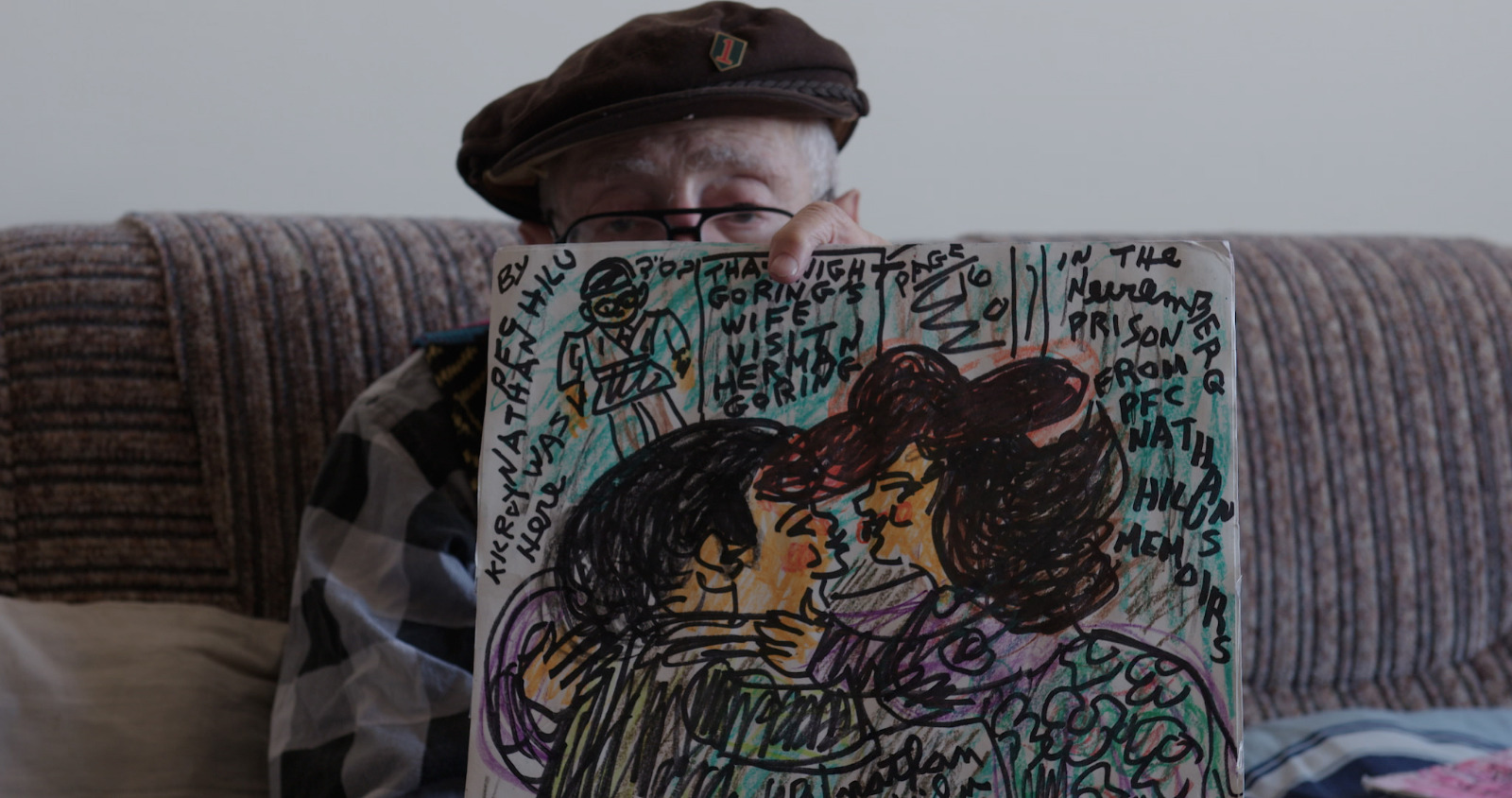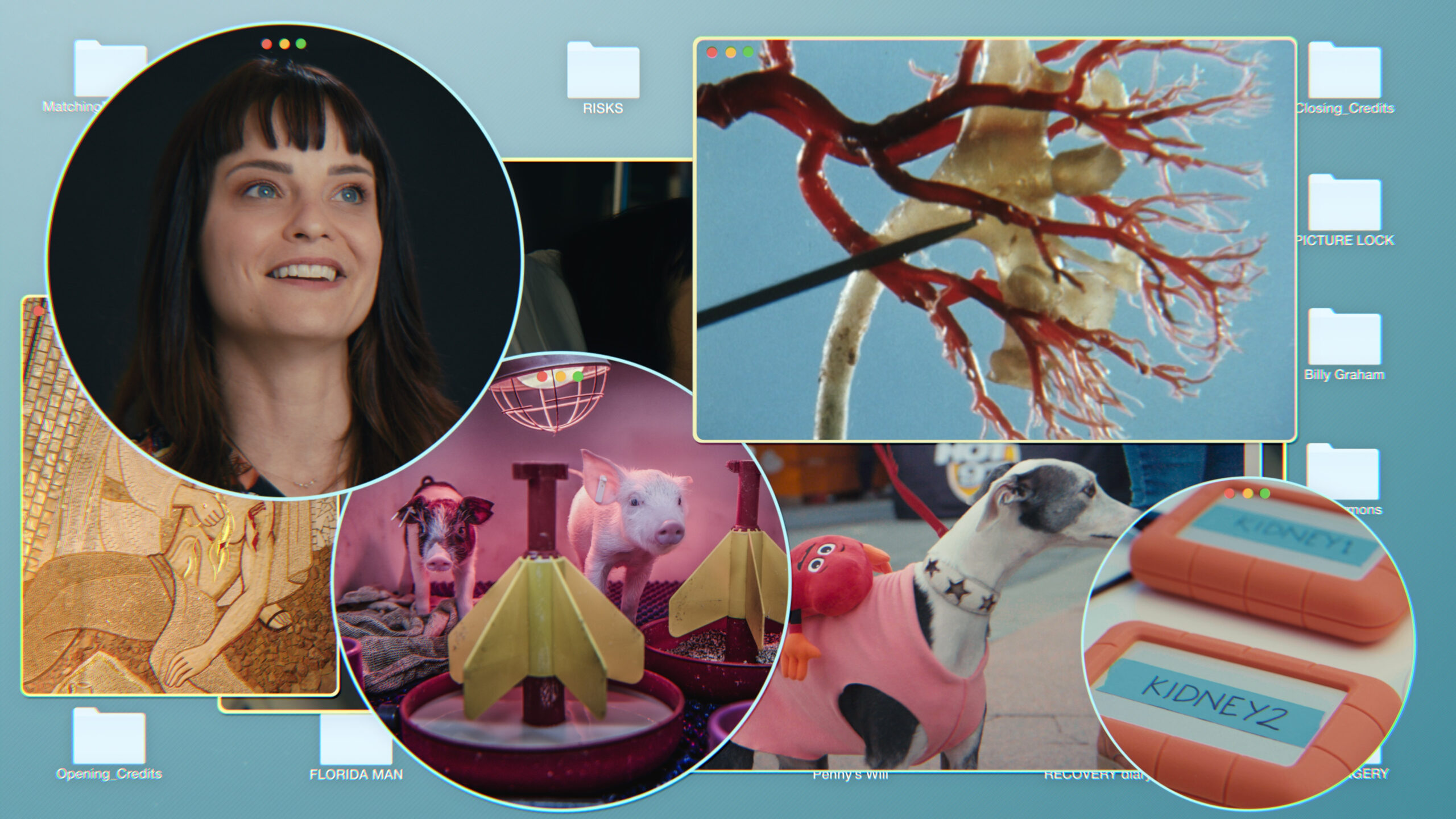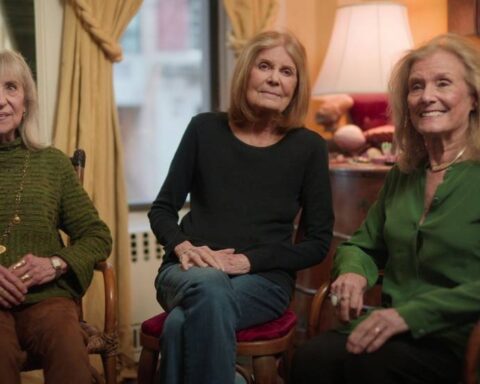Nathan-ism
(USA, 79 min.)
Dir. Elan Golod
Programme: Artscapes (World Premiere)
On its surface, Elan Golod’s Nathan-ism is a portrait of an affable if obsessive artist. It traces the lines of nonagenarian Nathan Hilu’s designs that provide autobiographical context with astonishing scope. Pages upon pages of scrawled lines and smatterings of colour speak to a remarkable youth spent as a guard for Nazi war criminals prior to their execution following the trials at Nuremberg. As Jews say at Passover, if this was simply the tale of a witness to this history who visually manifests facets of his memory to preserve for future generations, then dayenu, it would have been enough.
And yet quietly and provocatively, Golod’s film shifts in its last act to something even more profound and perhaps even more unsettling. As some of the facts unravel, we see that Hilu’s role isn’t quite what his images would convey, stories told so often that what had occurred is now a collage, mirroring how the artist cuts out images from other sources and glues or tapes them onto his canvas. There’s truth mixed with hyperbole, facts with fictionalization, making all the more challenging the role that witnessing plays after decades of trying to explain the unexplainable.
The film delves into the vagaries of “outsider art” in which the compulsion to create beyond the system is situated within a differing class of collectors. Full galleries showcase what some would consider primitive or amateur, while others exciting indicators of a more “pure” form of expression are freed from the rigidity of traditional modes of creation. Just about every frame of the film sees Hilu scribbling away, furiously stroking with his thick Sharpies and child-like collection of crayon colours that illustrate barbaric historical figures such as Herman Goering, Hitler’s right-hand man who was responsible for the implementation of the “final solution” that saw the liquidation of millions.
Hilu’s art reminds that these were men, not monsters, making their actions all the more human and awful. These individual bureaucrats efficiently and callously carried out their orders, and the crude, cartoon images from Hilu illustrate these characters in stark ways, but also show how the quotidian banality of evil is conducted by those who easily could be neighbours on the street, or people at your local government office.
Over and over Hilu tells these stories, showing the minutes-long kiss between Goering and his wife prior to his suicide hours before a scheduled hanging. We hear of conversations between Hilu and Albert Speer, Hitler’s architect and the person whose charm and calculated admission of guilt saved his neck from the gallows. Hilu speaks well of that man, even as he tells several tales reminding the prisoners of his own Jewish roots.
None of these stories fully unravels by the end and, given how fragile the acceptance of one of the most documented events in human history has been downplayed if not completely obfuscated or denied, makes this film all the more provocative. For some, Nathan-ism will provide further evidence of a historical hyperbole, downplaying the truths that were expressed by so many. Of course, what’s truly being done here is separating fact from fiction even from those so adamant about their own truths, showing that the process of verification is a difficult yet critical work in any medium, be it art or non-fiction filmmaking. The easy version of this portrait would have allowed the art to stand on its own and leave the audience content, the more challenging, and thus the more excellent version, allows these dichotomies to be exposed.
There are moments where the filmmaking becomes a bit heavy handed, such as when the recreation of an archivist seeking out the truth is presented with manipulative music as she grasps the situation. These needless flourishes could be tamed to give the audiences credit to discern what’s being uncovered, as other elements are presented in a far more straightforward, and thus far more effective, way. Still, these are quibbles, and while these formal moments are indeed heavy handed, the general result is a work that’s powerful, provocative, and extremely compelling.
In the end, Nathan-ism provides a portrait even more rich than what’s captured within the bounds of those many scraps of paper. It’s the story of a man and his art, and how we all manage in ways big and small to shift our own stories. This is not a simple matter of truth versus fiction, nor does it separate the compulsion to produce art with a more uncharitable diagnosis of obsession. It’s all of these things at once, and made all the more remarkable because of that. Kudos to Golod and his collaborators for digging in deeper, making what for some would be one illustration among many of an old man’s memories, and instead one of the most salient examinations of the vagaries of memory and the role of non-fiction filmmaking to weed out truth from the remembrances of a subject, no matter how charismatic or sympathetic they may be.
Nathan-ism screens at Hot Docs 2023.
Get more coverage from this year’s festival here.














